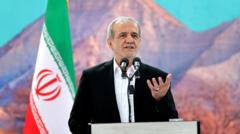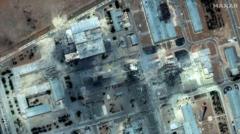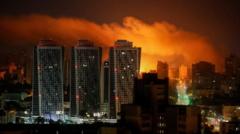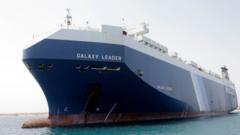**This article delves into the rich and complex history of Iran's concealed modern art treasures, their significance before and after the 1979 revolution, and their gradual return to the spotlight.**
**Hidden Treasures: Iran's Vault of Modern Art Masterpieces**
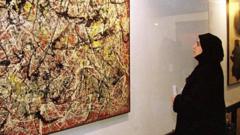
**Hidden Treasures: Iran's Vault of Modern Art Masterpieces**
**Exploring the Tehran Museum of Contemporary Art's incredible collection, a mix of cultural history and artistic brilliance.**
In the heart of Tehran lies a treasure trove of modern art masterpieces, kept in the depths of the Tehran Museum of Contemporary Art for decades. This hidden collection, featuring works from icons like Pablo Picasso, Vincent Van Gogh, Andy Warhol, and Jackson Pollock, boasts an estimated value of $3 billion, yet it remains largely unknown outside Iran.
Since 1979, only a fraction of the artworks has seen the light of day; however, the museum recently took strides to open its doors wider. The "Eye to Eye" exhibition, launched in October 2024, marked a historic moment for the museum, presenting more than 15 pieces for the first time. It enjoyed vast public interest, leading to multiple extensions before its finale in January 2025. This exhibition showcased an array of styles, including a striking work by Jean Dubuffet, marking its Iranian debut.
The collection serves not just as an artistic archive but as a reflection of socio-political narratives. One of the featured works is Warhol’s portrayal of Farah Pahlavi, the last queen of Iran, merging pop art with Iranian heritage. In stark contrast, Francis Bacon’s "Two Figures Lying on a Bed with Attendants" hangs nearby, alongside a portrait of Ayatollah Khomeini. Such juxtapositions underscore the profound cultural shifts following the 1979 revolution when many artworks were deemed too provocative or politically sensitive for public exhibition.
The museum, constructed in 1977 under the patronage of Pahlavi, intended to bridge modern art to Iranian audiences. However, after the revolution, many pieces were hidden away for their controversial content, creating a legendary aura around what lay dormant in the basement. It wasn’t until the late 1990s that Iran briefly reconnected with this cultural legacy, allowing artwork to travel internationally and reclaiming the museum's status.
Art historians regard this collection as a remarkably rare gathering of modern art outside of the West. It includes significant works such as Pollock's "Mural on Indian Red Ground," a powerful testament to his energetic style, and Picasso’s grand "The Painter and His Model," a striking piece representing the evolution of abstract art from post-cubism.
Despite the museum’s wealth of treasures, challenges persist. Travel advisories caution potential visitors from the UK and abroad, citing risks related to tensions in the region and the treatment of individuals with ties to Britain. Nonetheless, the Tehran Museum of Contemporary Art continues to thrive as a cultural beacon, championing its remarkable collection amidst evolving political landscapes and maintaining its role as a custodian of art in a complex historical context.
Since 1979, only a fraction of the artworks has seen the light of day; however, the museum recently took strides to open its doors wider. The "Eye to Eye" exhibition, launched in October 2024, marked a historic moment for the museum, presenting more than 15 pieces for the first time. It enjoyed vast public interest, leading to multiple extensions before its finale in January 2025. This exhibition showcased an array of styles, including a striking work by Jean Dubuffet, marking its Iranian debut.
The collection serves not just as an artistic archive but as a reflection of socio-political narratives. One of the featured works is Warhol’s portrayal of Farah Pahlavi, the last queen of Iran, merging pop art with Iranian heritage. In stark contrast, Francis Bacon’s "Two Figures Lying on a Bed with Attendants" hangs nearby, alongside a portrait of Ayatollah Khomeini. Such juxtapositions underscore the profound cultural shifts following the 1979 revolution when many artworks were deemed too provocative or politically sensitive for public exhibition.
The museum, constructed in 1977 under the patronage of Pahlavi, intended to bridge modern art to Iranian audiences. However, after the revolution, many pieces were hidden away for their controversial content, creating a legendary aura around what lay dormant in the basement. It wasn’t until the late 1990s that Iran briefly reconnected with this cultural legacy, allowing artwork to travel internationally and reclaiming the museum's status.
Art historians regard this collection as a remarkably rare gathering of modern art outside of the West. It includes significant works such as Pollock's "Mural on Indian Red Ground," a powerful testament to his energetic style, and Picasso’s grand "The Painter and His Model," a striking piece representing the evolution of abstract art from post-cubism.
Despite the museum’s wealth of treasures, challenges persist. Travel advisories caution potential visitors from the UK and abroad, citing risks related to tensions in the region and the treatment of individuals with ties to Britain. Nonetheless, the Tehran Museum of Contemporary Art continues to thrive as a cultural beacon, championing its remarkable collection amidst evolving political landscapes and maintaining its role as a custodian of art in a complex historical context.







